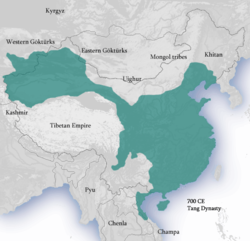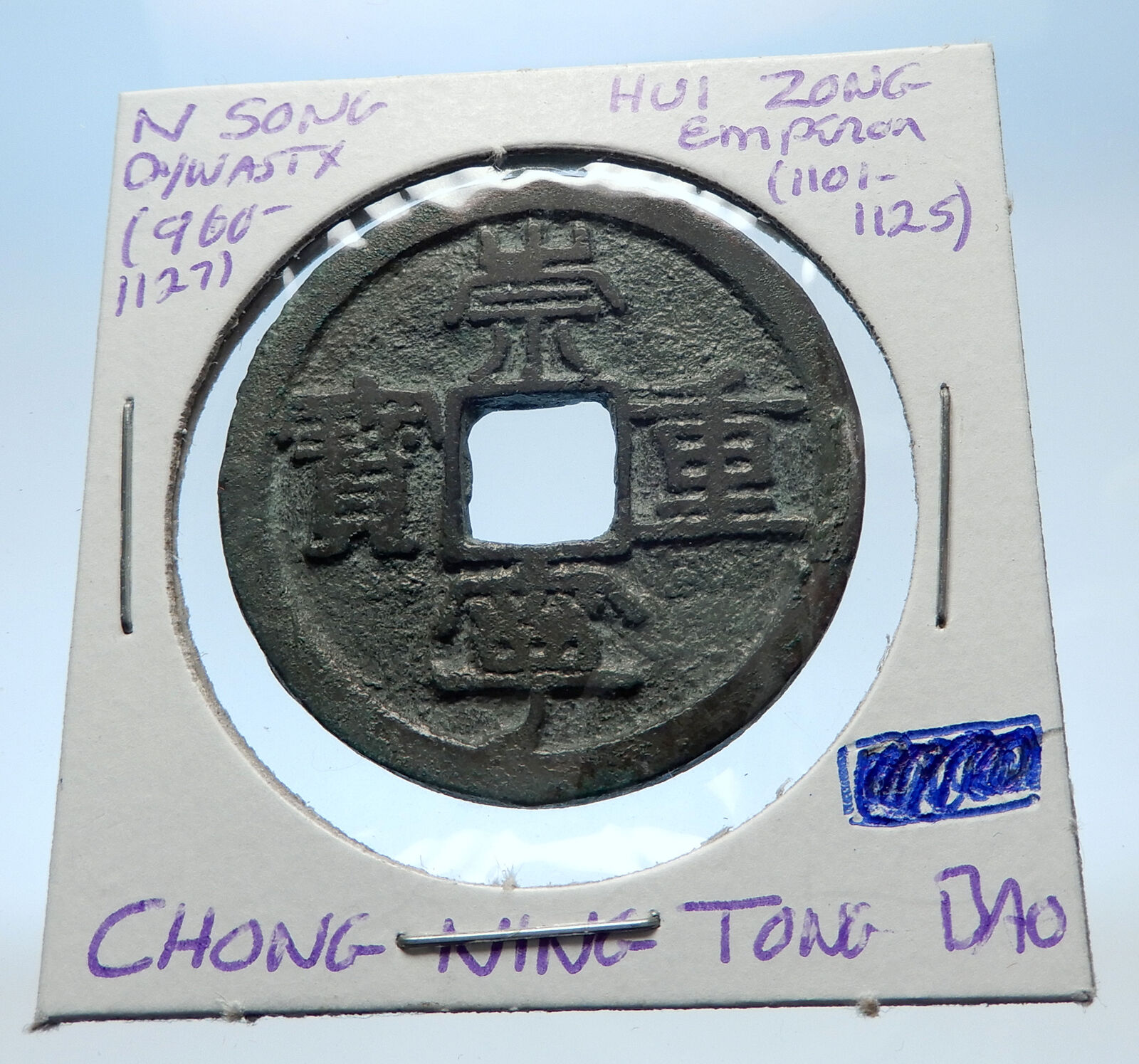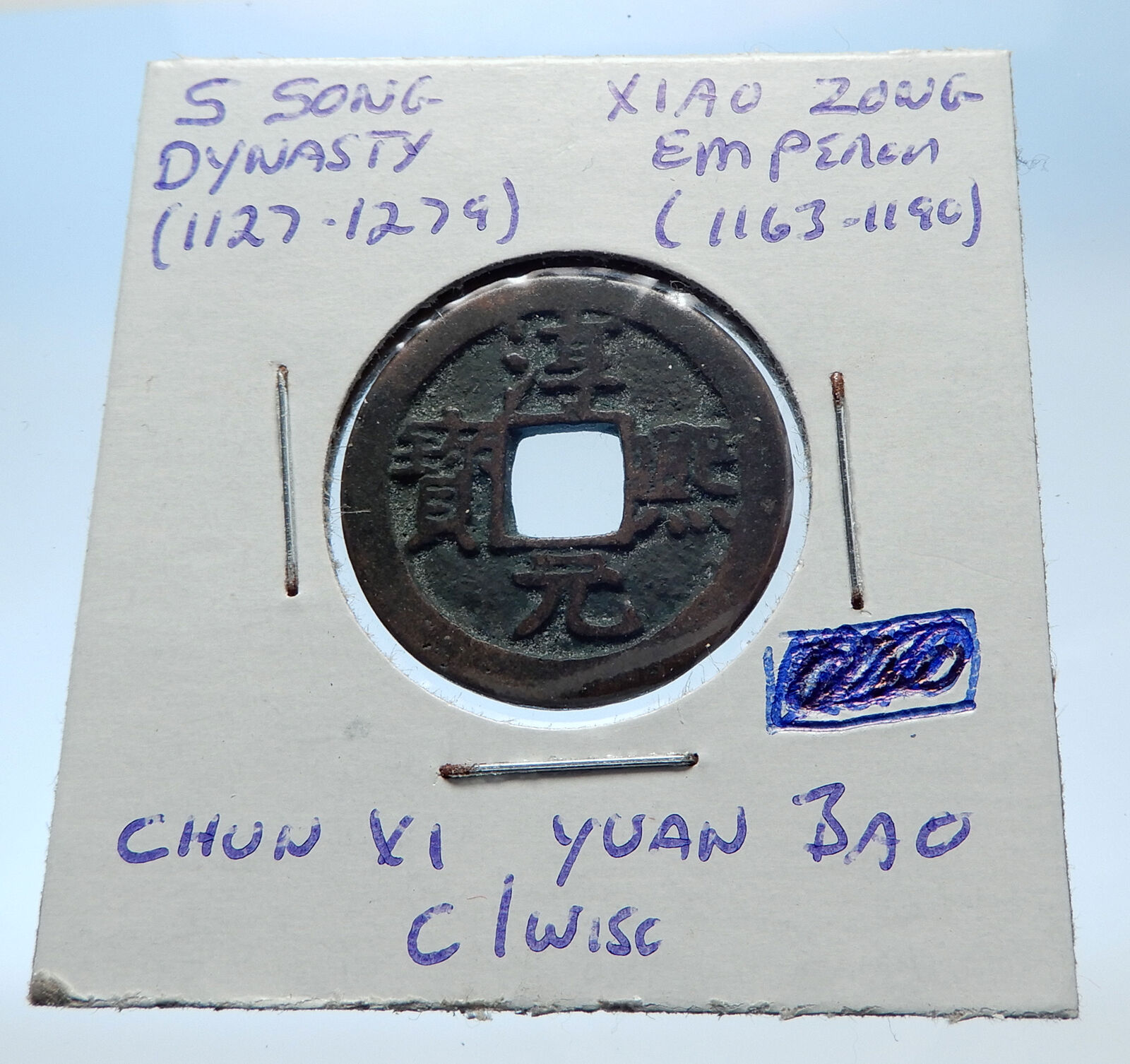|
China – Tang Dynasty (618-907 A.D.)
Bronze Kai Yuan Tong Bao Cash 22mm, Struck
713-732
AD (Middle Type)
Reference: H# 14.12A
開元通寶, Four Chinese characters, square hole within.
Nail mark under Tong, No 5 Yuan.
You are bidding on the exact item pictured, provided with a Certificate of Authenticity and Lifetime Guarantee of Authenticity.
 The The
Tang dynasty (Chinese: 唐朝) or the Tang
Empire was an imperial dynasty of China,
preceded by the Sui dynasty and followed by the
Five Dynasties and Ten Kingdoms period.
Historians generally regard the Tang as a high
point in Chinese civilization, and a golden age
of cosmopolitan culture. Tang territory,
acquired through the military campaigns of its
early rulers, rivaled that of the Han dynasty.
The Tang capital at Chang’an (present-day Xi’an)
was the most populous city in the world in its
day.
The Lǐ family (李) founded the
dynasty, seizing power during the decline and
collapse of the Sui Empire. The dynasty was
briefly interrupted when Empress Wu Zetian
seized the throne, proclaiming the Second Zhou
dynasty (690-705) and becoming the only Chinese
empress regnant. In two censuses of the 7th and
8th centuries, the Tang records estimated the
population by number of registered households at
about 50 million people. Yet, even when the
central government was breaking down and unable
to compile an accurate census of the population
in the 9th century, it is estimated that the
population had grown by then to about 80 million
people.[9][10][b] With its large
population base, the dynasty was able to raise
professional and conscripted armies of hundreds
of thousands of troops to contend with nomadic
powers in dominating Inner Asia and the
lucrative trade-routes along the Silk Road.
Various kingdoms and states paid tribute to the
Tang court, while the Tang also conquered or
subdued several regions which it indirectly
controlled through a protectorate system.
Besides political hegemony, the Tang also
exerted a powerful cultural influence over
neighboring East Asian states such as those in
Japan and Korea.
The Tang dynasty was
largely a period of progress and stability in
the first half of the dynasty’s rule, until the
An Lushan Rebellion and the decline of central
authority in the later half of the dynasty. Like
the previous Sui dynasty, the Tang dynasty
maintained a civil-service system by recruiting
scholar-officials through standardized
examinations and recommendations to office. The
rise of regional military governors known as
jiedushi during the 9th century undermined
this civil order. Chinese culture flourished and
further matured during the Tang era; it is
traditionally considered the greatest age for
Chinese poetry. Two of China’s most famous
poets, Li Bai and Du Fu, belonged to this age,
as did many famous painters such as Han Gan,
Zhang Xuan, and Zhou Fang. Scholars of this
period compiled a rich variety of historical
literature, as well as encyclopedias and
geographical works. The adoption of the title
Tängri Qaghan by the Tang Emperor Taizong in
addition to his title as emperor was eastern
Asia’s first “simultaneous kingship”.
Many notable innovations occurred under the
Tang, including the development of woodblock
printing. Buddhism became a major influence in
Chinese culture, with native Chinese sects
gaining prominence. However, in the 840s the
Emperor Wuzong of Tang enacted policies to
persecute Buddhism, which subsequently declined
in influence. Although the dynasty and central
government had gone into decline by the 9th
century, art and culture continued to flourish.
The weakened central government largely withdrew
from managing the economy, but the country’s
mercantile affairs stayed intact and commercial
trade continued to thrive regardless. However,
agrarian rebellions in the latter half of the
9th century resulted in damaging atrocities such
as the Guangzhou massacre of 878-879.
Cash was a type of coin of China and East Asia, used from the 4th
century BC until the 20th century AD. Originally cast during the Warring
States period, these coins continued to be used for the entirety of Imperial
China as well as under Mongol, and Manchu rule. The last Chinese cash coins
were cast in the first year of the Republic of China. Generally most cash
coins were made from copper or bronze alloys, with iron, lead, and zinc
coins occasionally used less often throughout Chinese history. Rare silver
and gold cash coins were also produced. During most of their production,
cash coins were cast but, during the late Qing dynasty, machine-struck cash
coins began to be made. As the cash coins produced over Chinese history were
similar, thousand year old cash coins produced during the Northern Song
dynasty continued to circulate as valid currency well into the early
twentieth century.
In the modern era, these coins are considered to be Chinese “good luck
coins”; they are hung on strings and round the necks of children, or over
the beds of sick people. They hold a place in various superstitions, as well
as Traditional Chinese medicine, and Feng shui. Currencies based on the
Chinese cash coins include the Japanese mon, Korean mun, Ryukyuan mon, and
Vietnamese văn.
|





 The
The 




